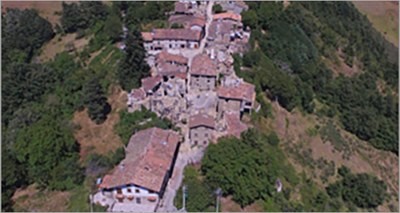Central Italy earthquake: ENEA laboratories open to citizens to involve them in reconstruction
12/3/2020
 Combining technological and socio-cultural elements by involving citizens in the reconstruction of the areas affected by the 2016-2017 earthquakes in Central Italy. This is the innovative approach implemented by ENEA, together with the Rome universities Sapienza and Roma Tre, as part of the project SISMI [1] Project of the Technological District for Cultural Heritage of Lazio.
Combining technological and socio-cultural elements by involving citizens in the reconstruction of the areas affected by the 2016-2017 earthquakes in Central Italy. This is the innovative approach implemented by ENEA, together with the Rome universities Sapienza and Roma Tre, as part of the project SISMI [1] Project of the Technological District for Cultural Heritage of Lazio.
In particular, the citizens of Collespada, the hamlet of Accumoli (Rieti) heavily damaged by the earthquake of 30 October 2016, were involved in the experimentation and shared the results of the simulations on the seismic behavior of historical structures and data on the effectiveness of the interventions conducted and the seismic recovery and the improvement technologies adopted. At the same time, the methods and results of the seismic verification tests performed on materials and intervention techniques for reconstruction and recovery were made available to citizens.
"The new approach included on the one hand the verification of technologies and methods already acquired at a scientific level and made available to companies of the sector and on the other the communication of their effectiveness through the involvement of citizens both directly in the laboratory, and via the internet, with the possibility of communicating with the researchers during the experiment ", explained Gerardo De Canio, the engineer who conducted the tests on the" vibrating tables " at the ENEA Casacccia Research Center, among the largest in Europe, which allow to reproduce different intensities and types of seismic waves.
Mortars and wall types with the same characteristics as the Accumoli and Amatrice areas were used in the seismic tests, which were carried out in two phases: the first to determine the acceleration value on the ground, which causes significant damage, followed by a structural reinforcement intervention; the second in which the tests were repeated to verify the effectiveness of the reinforcement itself.
"The whole Collespada community immediately took action after the seismic event, forming a committee and seeking unitary operational solutions. It is thanks to the commitment and cohesion of house owners in presenting single practices that it was possible to start a unitary reconstruction of the area, among the first of its kind " De Canio concluded.
In addition to the committee of the inhabitants of Collespada, the results of the experimental tests and the research carried out were shared with the Municipality of Accumoli, the Inter-municipal Operative Center, the Arking Associati design studio and the company Fibrenet. Experimental activity is still ongoing to provide further information on the effectiveness of consolidation interventions.
For more information please contact:
Gerardo De Canio, gerardo.decanio@enea.it
[1] Technology for the improvement of safety and the reconstruction of historical sites in seismic areas
